1. Giannakopoulos P, Hof PR, Savioz A, Guimon J, Antonarakis SE, Bouras C. Early-onset dementias: clinical, neuropathological and genetic characteristics. Acta Neuropathol. 1996; 91(5):451–465. PMID:
8740225.
2. Harvey RJ, Rossor MN. Does early-onset Alzheimer disease constitute a distinct subtype? The contribution of molecular genetics. Alzheimer Dis Assoc Disord. 1995; 9(Suppl 1):S7–13. PMID:
7546599.
3. Moschetti K, Barragan N, Basurto-Dávila R, Cummings PL, Sorvillo F, Kuo T. Mortality and productivity losses from Alzheimer disease among US adults aged 40 to 64 years, 1999 to 2010. Alzheimer Dis Assoc Disord. 2015; 29(2):165–168. PMID:
24445567.
4. Vieira RT, Caixeta L, Machado S, Silva AC, Nardi AE, Arias-Carrión O, et al. Epidemiology of early-onset dementia: a review of the literature. Clin Pract Epidemol Ment Health. 2013; 9(1):88–95.
5. Kelley BJ, Boeve BF, Josephs KA. Young-onset dementia: demographic and etiologic characteristics of 235 patients. Arch Neurol. 2008; 65(11):1502–1508. PMID:
19001170.
6. Werner P, Stein-Shvachman I, Korczyn AD. Early onset dementia: clinical and social aspects. Int Psychogeriatr. 2009; 21(4):631–636. PMID:
19470199.
7. Koedam EL, Pijnenburg YA, Deeg DJ, Baak MM, van der Vlies AE, Scheltens P, et al. Early-onset dementia is associated with higher mortality. Dement Geriatr Cogn Disord. 2008; 26(2):147–152. PMID:
18679029.
8. Schott JM, Ridha BH, Crutch SJ, Healy DG, Uphill JB, Warrington EK, et al. Apolipoprotein e genotype modifies the phenotype of Alzheimer disease. Arch Neurol. 2006; 63(1):155–156. PMID:
16401755.
9. Mendez MF. Early-onset Alzheimer disease. Neurol Clin. 2017; 35(2):263–281. PMID:
28410659.
10. Kay DW, Forster DP, Newens AJ. Long-term survival, place of death, and death certification in clinically diagnosed pre-senile dementia in northern England. Follow-up after 8-12 years. Br J Psychiatry. 2000; 177(2):156–162. PMID:
11026956.
11. Samuel LJ, Szanton SL, Wolff JL, Ornstein KA, Parker LJ, Gitlin LN. Socioeconomic disparities in six-year incident dementia in a nationally representative cohort of U.S. older adults: an examination of financial resources. BMC Geriatr. 2020; 20(1):156. PMID:
32370792.
12. Woods LM, Rachet B, Coleman MP. Origins of socio-economic inequalities in cancer survival: a review. Ann Oncol. 2006; 17(1):5–19. PMID:
16143594.
13. Korhonen K, Einiö E, Leinonen T, Tarkiainen L, Martikainen P. Midlife socioeconomic position and old-age dementia mortality: a large prospective register-based study from Finland. BMJ Open. 2020; 10(1):e033234.
14. van de Vorst IE, Koek HL, Stein CE, Bots ML, Vaartjes I. Socioeconomic disparities and mortality after a diagnosis of dementia: results from a nationwide registry linkage study. Am J Epidemiol. 2016; 184(3):219–226. PMID:
27380760.
15. Chen R, Hu Z, Wei L, Wilson K. Socioeconomic status and survival among older adults with dementia and depression. Br J Psychiatry. 2014; 204(6):436–440. PMID:
24526747.
16. Thomas BM, McGonigal G, McQuade CA, Starr JM, Whalley LJ. Survival in early onset dementia: effects of urbanization and socio-economic deprivation. Neuroepidemiology. 1997; 16(3):134–140. PMID:
9159768.
17. Laver K, Dyer S, Whitehead C, Clemson L, Crotty M. Interventions to delay functional decline in people with dementia: a systematic review of systematic reviews. BMJ Open. 2016; 6(4):e010767.
18. van Vliet D, de Vugt ME, Bakker C, Pijnenburg YA, Vernooij-Dassen MJ, Koopmans RT, et al. Time to diagnosis in young-onset dementia as compared with late-onset dementia. Psychol Med. 2013; 43(2):423–432. PMID:
22640548.
19. van der Flier WM, Pijnenburg YA, Fox NC, Scheltens P. Early-onset versus late-onset Alzheimer’s disease: the case of the missing APOE \xc9\x9b allele. Lancet Neurol. 2011; 10(3):280–288. PMID:
21185234.
20. Tellechea P, Pujol N, Esteve-Belloch P, Echeveste B, García-Eulate MR, Arbizu J, et al. Early- and late-onset Alzheimer disease: are they the same entity? Neurologia (Engl Ed). 2018; 33(4):244–253. PMID:
26546285.
21. Ha R, Jung-Choi K. Area-based inequalities and distribution of healthcare resources for managing diabetes in South Korea: a cross-sectional multilevel analysis. BMJ Open. 2022; 12(2):e055360.
22. Yoo KH, Shin DW, Cho MH, Kim SH, Bahk HJ, Kim SH, et al. Regional variations in frequency of glycosylated hemoglobin (HbA1c) monitoring in Korea: a multilevel analysis of nationwide data. Diabetes Res Clin Pract. 2017; 131:61–69. PMID:
28689084.
23. Kyriopoulos II, Zavras D, Skroumpelos A, Mylona K, Athanasakis K, Kyriopoulos J. Barriers in access to healthcare services for chronic patients in times of austerity: an empirical approach in Greece. Int J Equity Health. 2014; 13(1):54. PMID:
25062725.
24. Roh CG, Kim J. What are more efficient transportation services in a rural area? A case study in Yangsan city, South Korea. Int J Environ Res Public Health. 2022; 19(18):11263. PMID:
36141536.
25. Jeon B, Choi SM, Kim CY. Socioeconomic equity in regional distribution of health care resources in Korea. Health Policy Manag. 2012; 22(1):85–108.
26. Youn HM, Yun C, Kang SH, Kwon J, Lee HJ, Park EC, et al. A study on regional differences in healthcare in Korea: Using position value for relative comparison index. Health Policy Manag. 2021; 31(4):491–507.
27. Chang KJ, Hong CH, Lee KS, Kang DR, Lee JD, Choi SH, et al. Mortality risk after diagnosis of early-onset Alzheimer’s disease versus late-onset Alzheimer’s disease: a propensity score matching analysis. J Alzheimers Dis. 2017; 56(4):1341–1348. PMID:
28157103.
28. Lee DW. What is needed for the success of national responsibility for dementia. J Korean Med Assoc. 2017; 60(8):618.
30. Ueki A, Shinjo H, Shimode H, Nakajima T, Morita Y. Factors associated with mortality in patients with early-onset Alzheimer’s disease: a five-year longitudinal study. Int J Geriatr Psychiatry. 2001; 16(8):810–815. PMID:
11536348.
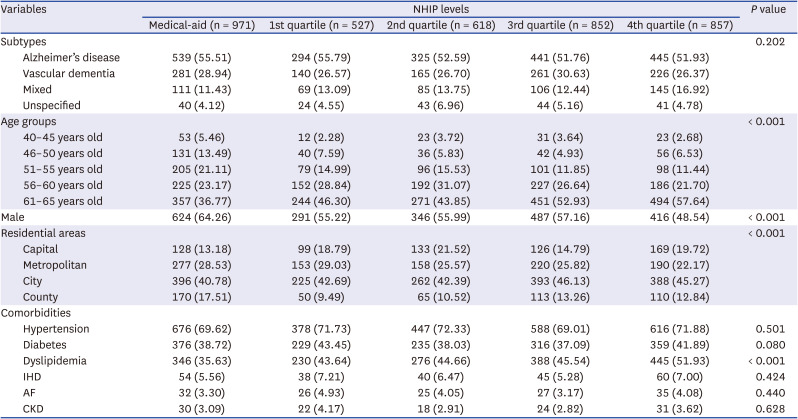
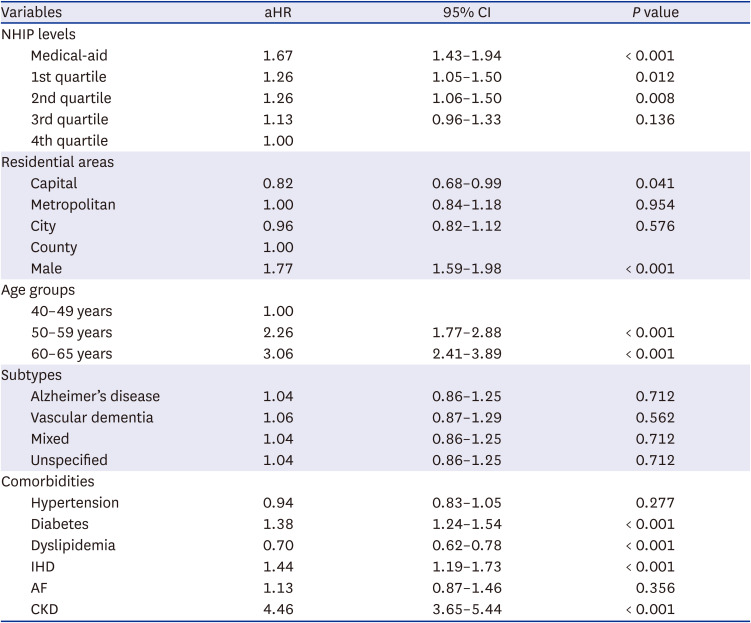
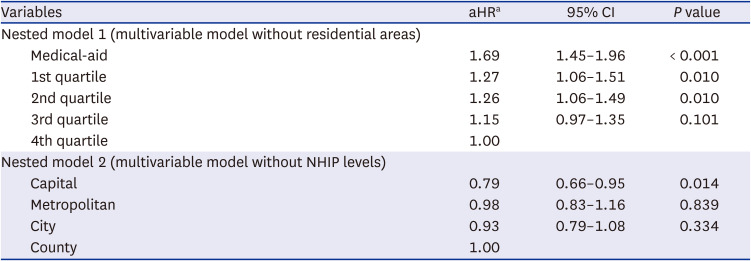
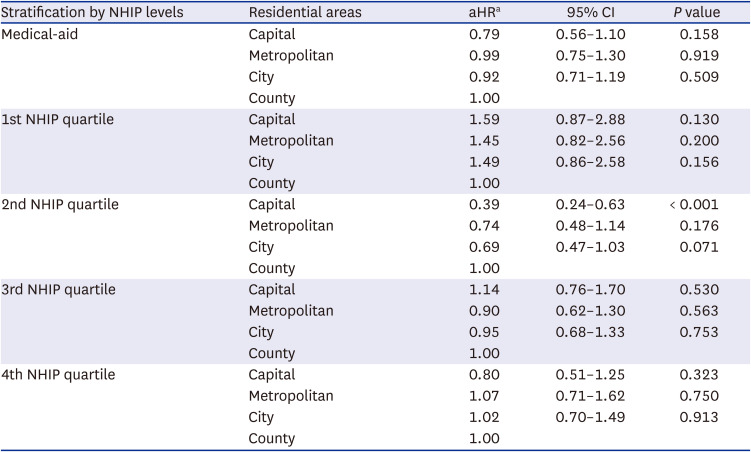




 PDF
PDF Citation
Citation Print
Print





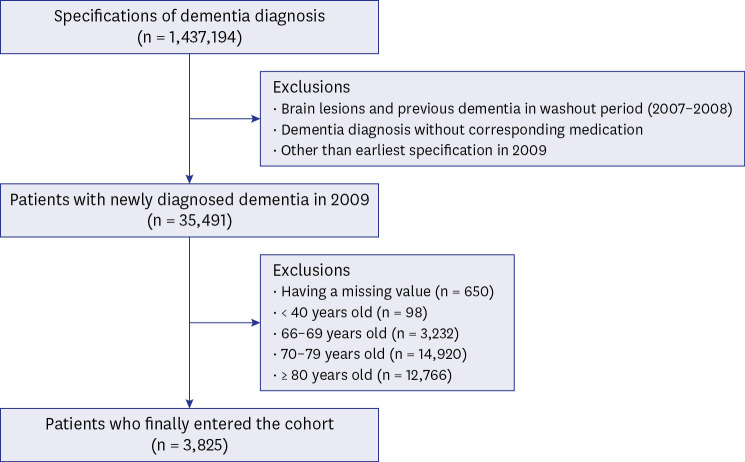
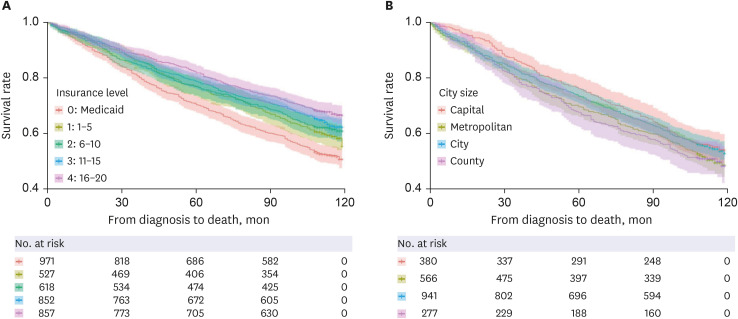
 XML Download
XML Download